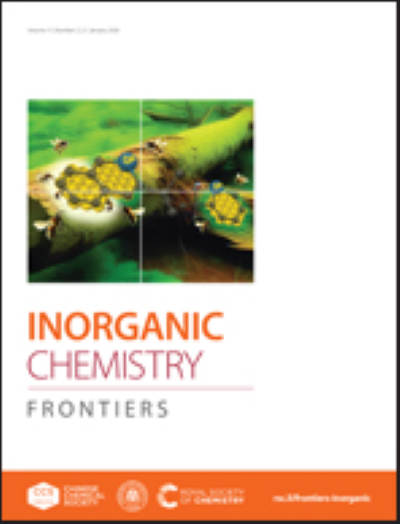CuBi2O4上原位硫化诱导Bi2S3非均相促进光电化学制氨
IF 6.4
1区 化学
Q1 CHEMISTRY, INORGANIC & NUCLEAR
引用次数: 0
摘要
光电化学硝酸盐还原反应(PEC-NIRR)为解决含氮废水污染和绿色合成氨提供了一种可持续的解决方案。然而,目前所报道的催化剂仍然受到载流子分离效率低和析氢反应(HER)竞争等问题的限制。采用表面硫化策略在CuBi2O4表面原位外延生长Bi2S3,成功构建了CuBi2O₄/Bi2S3催化剂。基于Bi2S3的窄带隙(1.67eV)和硫原子活性位,形成了II型能带排列和原子级接触。氧空位(Ov)浓度可调节至48.98%,显著促进电荷分离和氢自由基(H*)的生成。在照明条件下,CuBi2O₄/Bi2S3能产生33.69 μg h⁻¹cm⁻²的NH₃,是CuBi2O4的3.84倍。副产物NO₂的产毒率明显下降,选择性极佳(59.71%)。FTIR和¹H NMR进一步证实了NH₃的生成完全来源于NO3-。因此,本研究为提高多金属氧化物催化剂的固有活性提供了一种新的原位硫化策略。本文章由计算机程序翻译,如有差异,请以英文原文为准。
In-situ sulfidation induced Bi2S3 heterogeneous phase on CuBi2O4 for boosting photoelectrochemical ammonia production
Photoelectrochemical nitrate reduction reaction (PEC-NIRR) provides a sustainable solution for addressing nitrogen-containing wastewater pollution and green ammonia synthesis. However, the reported catalysts are still limited by issues such as low carrier separation efficiency and competition from the hydrogen evolution reaction (HER). A surface sulfidation strategy was employed to epitaxially grow Bi2S3 in situ on the surface of CuBi2O4, successfully constructing a CuBi2O₄/Bi2S3 catalyst. Based on the narrow bandgap (1.67eV) and sulfur atom active sites of Bi2S3, a type II band arrangement and atomic level contact has been configured. The oxygen vacancy (Ov) concentration could be regulated to 48.98%, significantly promoting charge separation and the generation of hydrogen radicals (H*). Under illumination, the CuBi2O₄/Bi2S3 achieves a high NH₃ production rate of 33.69 μg h⁻¹ cm⁻², which is 3.84 times that of CuBi2O4. The by-product NO₂⁻ production rate significantly depressed, contributing to an excellent selectivity (59.71 %). FTIR and ¹H NMR spectroscopic analyses further confirm that NH₃ generation is entirely derived from NO3-. Therefore, this work offering novel providing a new strategy of in-situ sulfidation for boosting the intrinsic activity of polymetallic oxide catalyst.
求助全文
通过发布文献求助,成功后即可免费获取论文全文。
去求助
来源期刊

Inorganic Chemistry Frontiers
CHEMISTRY, INORGANIC & NUCLEAR-
CiteScore
10.40
自引率
7.10%
发文量
587
审稿时长
1.2 months
期刊介绍:
The international, high quality journal for interdisciplinary research between inorganic chemistry and related subjects
 求助内容:
求助内容: 应助结果提醒方式:
应助结果提醒方式:


